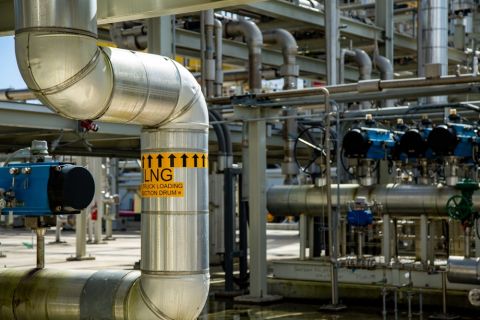Operators in North America’s shale plays are increasingly relying on microseismic information to determine fracture length and orientation during hydraulic fracturing operations. This understanding often impacts the location and orientation of future wells.
In a proposed geothermal project in the UK, information from the seismic around the first well will determine the exact location of the second well. Once again, it’s all about the fractures.
The Eden Deep Geothermal Energy Project in Cornwall is an ambitious attempt to tap into the heat buried beneath the granite in the area. The Cornubian Batholith, sort of a granite “spine” in Western Europe, brings geothermal heat closer to the surface and lowers drilling costs, according to Eden’s website.

The idea is to drill a 4-km to 5-km (2.4-mile to 3-mile) borehole into the granite, where it will encounter temperatures of about 180°C to 190°C (356°F to 374°F). Water will be pumped into this borehole to open up natural and induced fractures in the rock.
Borehole seismic sondes developed by DJB instruments will be deployed around the borehole. The sondes can be buried to 400 m (1,300 ft) deep, do not need a clamping mechanism, and have large accelerometers and low-noise amplifiers to provide a very high output and make them sensitive to small signals.
The accelerometers, according to DJB literature, have a larger bandwidth than geophones and seismometers, facilitating additional analytical treatment such as source parameters.
The sensors also have very low power consumption and can be operated from a car battery. The sondes will be triangulated to find the exact locations where fractures are opened and then slipped by a shear mechanism. By imaging this location, the second borehole can be sited.
“The sondes monitor what’s happening in terms of the water and the movement of the rocks,” said Paul Hunter, managing director of DJB. “We’ve supplied six sondes to the Eden Project, and they will be put around the perimeter and keep monitoring and measuring what’s happening.” It’s important to drill into these open fractures because that’s where the magic of geothermal comes to bear. Water pumped down the first borehole will be heated, transferred to the second borehole through the fracture network, and sent back to the surface as steam to provide electricity. Eden Project participants have partnered with ESG Energy to build the facility to generate both heat and electricity. The site is located in a parking lot and has been sanctioned by the Cornwall Council. When complete, it should have a capacity of 3 MW to 4 MW of electricity and should be able to generate about 95% of the time. It’s expected to supply enough electricity to support 3,500 households as well as some heating capacity. “An ESG plant is very efficient when compared to many other systems,” the website states. “Around 30% of the power created by the plant will go back into pumping water around the system, so it can be said to be about 70% efficient overall.” Covering an area “about the size of a rugby pitch,” the plant will run 24 hours a day, more than 345 days per year, and is expected to come onstream in 2013. DJB, meanwhile, is already developing its next generation of sondes to operate at greater depths and temperatures. Might there be applications to oil and gas operations ? Only time will tell. But any device that can so accurately pinpoint open fractures is certainly worth a look.
Recommended Reading
JMR Services, A-Plus P&A to Merge Companies
2024-03-05 - The combined organization will operate under JMR Services and aims to become the largest pure-play plug and abandonment company in the nation.
New Fortress Energy Sells Two Power Plants to Puerto Rico
2024-03-18 - New Fortress Energy sold two power plants to the Puerto Rico Electric Power Authority to provide cleaner and lower cost energy to the island.
Kimmeridge Fast Forwards on SilverBow with Takeover Bid
2024-03-13 - Investment firm Kimmeridge Energy Management, which first asked for additional SilverBow Resources board seats, has followed up with a buyout offer. A deal would make a nearly 1 Bcfe/d Eagle Ford pureplay.
SilverBow Rejects Kimmeridge’s Latest Offer, ‘Sets the Record Straight’
2024-03-28 - In a letter to SilverBow shareholders, the E&P said Kimmeridge’s offer “substantially undervalues SilverBow” and that Kimmeridge’s own South Texas gas asset values are “overstated.”
CEO: Coterra ‘Deeply Curious’ on M&A Amid E&P Consolidation Wave
2024-02-26 - Coterra Energy has yet to get in on the large-scale M&A wave sweeping across the Lower 48—but CEO Tom Jorden said Coterra is keeping an eye on acquisition opportunities.





